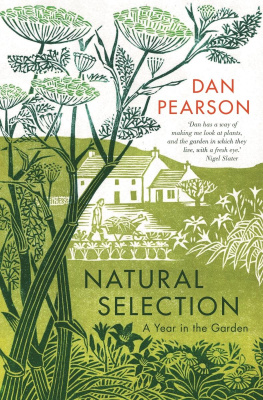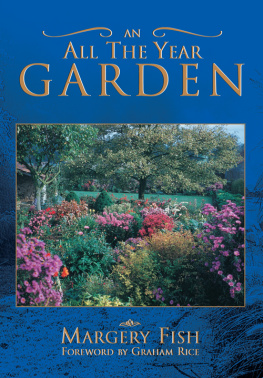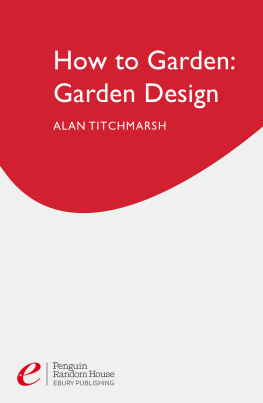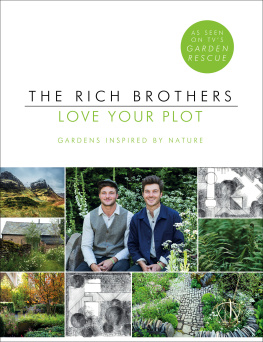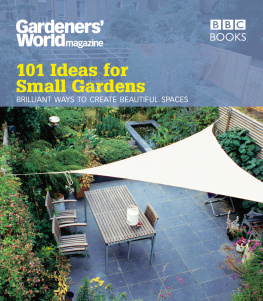To Mum and Dad, for your encouragement and constancy.
And to Huw, for sharing the vision.
It has been interesting to look back over the best part of ten years of writing for the Observer and see my gardening time mapped in words. In that decade my evolution as a gardener has been transformed by a move from London, where for fifteen years I had a long, fenced-in garden in Peckham, to Hillside, an eight-hectare smallholding in Somerset. In London I created a world which provided me with a haven in the hubbub. Here at Hillside my boundaries are distant and the eye can travel. The move was perhaps the greatest change of my life, in gardening terms, but one that was necessary and inevitable. I needed to feel smaller and less in control of my environment and to develop a new way of gardening that allowed me to be closer to the land and its rhythms. The move the need for which was best explained by a friend who equated my London life to being pot-bound was also part of a process that every gardener embarks upon when they make the commitment to garden. You cannot help but evolve, for a garden is never static and inspires you to keep pace and develop.
Writing has helped to pull my gardening journey into focus. While the articles in this collection have been selected from a decade of observations and a variety of locations, they have been chosen to cover the twelve months of the year, so that the shifts in the seasons and in place are mapped in thoughts and activities. One of the great joys of the gardening year is the fact that the garden forces you to pay attention to the here and now. Every week is different from the next, but there is also reassurance in the repetition; the inevitability of spring blossom, and the flare of the berries at the other end of the growing season. A single years experience is like the growth that accompanies it. It builds and layers and enriches.
My own path as a gardener was set at about five years old when my father and I made a pond in the orchard. It was a rectangle of just a couple of metres, but in planting it and watching its evolution through a watery lens, I discovered the alchemy of tending living things and the reward that comes from that process of nurturing. Some describe this as having green fingers, but to me gardening is a unified combination of skills that is actually not remotely mysterious. It is an ability to observe and to notice the needs of a plant (or combination of plants) and then to respond to those needs. As time goes on and the process continues, we become wiser as gardeners and more confident. We learn that it is possible to break the rules and, indeed, to make up our own. We evolve, we get wilder or neater or more accepting about the nature of weeds.
I feel I had a head start in learning to garden so young, and I was luckier than most because I grew up amongst people who were fascinated by gardens and had an enthusiasm for growing things. My mother, who was brought up in vicarages and whose father had grown produce to eat during the war, tended our kitchen garden. My father grew the flowers and, although I wouldnt describe Dad as an instinctive gardener, he had a great eye. He also had a way with colour; he was never afraid of it, and we used to spend hours comparing notes while working on a pair of borders on either side of a path, one of which was mine, the other his. It was safer that way, for even then I had an insatiable appetite for plants and was hungry for more ground, and would have happily taken his border too.
Our neighbour Geraldine was also a great influence. A naturalist at heart, but a lifelong and committed gardener, her garden gate was always open to me. She gardened on the wild side, and from her I learned early on that a weed is only a plant in the wrong place. She was never discriminating on that front, and weeds were as welcome in her garden as choice plants, and they all came with fascinating stories of their provenance: the Fritillaria pyrenaica, for instance, collected on one of her travels to the Pyrenees and wrapped in damp, foreign newspaper in the boot of her car for the long journey home. In the garden she would part the weeds like curtains, to reveal her collected treasures, and then the stories would begin. Although my training at the RHS garden at Wisley was the polar opposite (and would soon teach me a very different set of rules), her influence instilled in me an openness to the blur between the world of the garden and the wild ground beyond it. In my late teens it was Geraldines stories that set me off travelling to see plants in the wild. Her stories were the inspiration, but it was only when I saw plants growing in their natural settings for myself that everything fell into place.
My mother, who has always been driven as much by a project as by a story, was responsible for our familys move to a house with half a hectare of long-forgotten garden. Hill Cottage had overwhelmed the old lady who had lived there in its ruins and, by the mid-1970s, when we acquired it, the garden was several decades gone. Trees sprouted from the cottages chimney and akebia vine had got under the skirting boards and wound around the furniture. We moved there when I was ten and spent the next seven years, until I left home, clearing the garden and discovering the treasures that lay submerged in the undergrowth. It was there that I learned to garden with and not against nature, for we were gardening as we cleared and with only as much energy as we had to keep the wilderness from closing in behind us.
At ten I was a child with a narrow frame of focus. While classmates were reading Enid Blyton and Alan Garner, my reading consisted of plant catalogues; my entire world was the garden. I started, but never finished, creating an illustrated book about Hill Cottage and made diaries with diagrams and drawings of plants and combinations that Id been inspired by. Beth Chattos catalogues were a paradise of description and anecdotes. At school I kept my secret to myself, for I knew that it was strange to be so committed to a pastime that was seen as the domain of an older generation.
Joan Wiggins, my English teacher at that point, was trying to get me to read more broadly and it is her whom I thank for showing me the connection between words, plants and the process of growing. She encouraged my writings, which, once they were on track, poured out with stories of the wilderness we lived in and the natural world that was my domain.
By the time I was thirteen she had introduced me to the books of Christopher Lloyd and I became hungry for the written word and the wider gardening world it connected me to. Christos words, of course, came out of a real place and from decades of experience. Later, when I visited his garden, Great Dixter, with my father, I came to love it. As I stood under the Mount Etna broom he had described so vividly, his writings and my imaginings came together and combined. I wrote to him as a teenager and he gave me a tour of his meadows. He was a man who saw the importance of sharing his experiences. Later I came to read the late Vita Sackville-West, whose garden was by then in the hands of her gardeners. Although it had become something else entirely clipped where it was once voluminous, and chic where it had probably been shabby the romance was still there in her writing. I never dreamed then that I would one day be writing in her shoes at the Observer.
Today my gardening time is precious and well guarded. The garden is a place in which I can lose myself as I did when I was a child, with a disregard for time that can easily see two hours turning into an afternoon or even longer. It is a sanctuary of sorts and one that allows me to combine mindfulness with the purely physical. It is a place that opens up ease of thought. In fact the juxtaposition of discovery and disappointment is often a better education than a delight easily forgotten. It is all part of an evolution, of the growing and the enrichment that comes from doing and looking. And the writing helps to pin it down.

